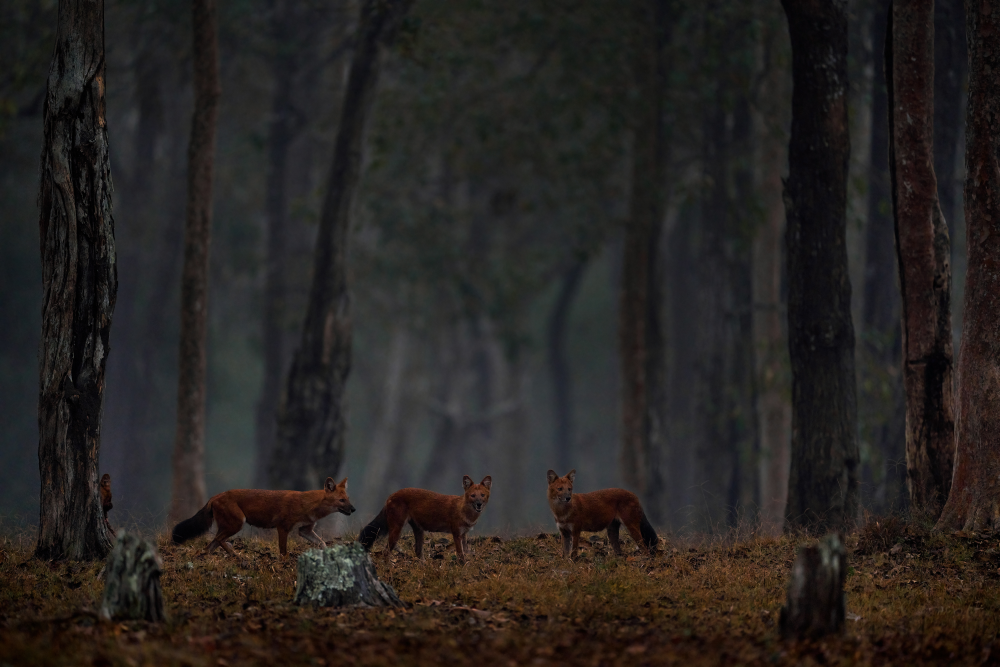You’re running through the forest, flashes of orange all around, when suddenly, it all goes quiet. Gone are the high-pitched vocalizations they chirped while in pursuit. Now, there’s only a faint whistling. You’re a deer in one of Asia’s forests, and you’re about to get chomped by a pack of dholes.
ADVERTISEMENT GO AD FREE
Dholes are wild dogs that are about the size of a German shepherd with burnt-orange fur and, frankly, really quite adorable faces. The African wild dog is closest to these animals genetically speaking, but they can’t whistle like a dhole does.
Nicknamed the “whistling dogs”, dholes are one of the very few land mammals known to whistle. They have a wide range of vocalizations that help them navigate the noisy forest environment as a pack. According to the Dhole Conservation Fund, they can whine, mew, yap, squeak, scream, growl, bark, and chatter, but the whistle is really what they’re famous for.
Dholes will work as a team to hunt, spreading out and closing in on prey from multiple directions, but the further they spread, the harder it gets to hear one another. Dense forest, whooping birds, and hissing insects all get in the way of their higher-frequency calls that don’t travel far, but the whistle can go a long way.
It’s comparatively a much lower-frequency call, meaning it can carry further and will be easier to hear across the dispersed pack. The efficient means of communication also make it easier for the whole pack to get closer to their prey, without whatever they’re hunting clueing on to what’s about to happen.
The efficiency of whistles is something the tapir has clocked onto, too, though instead of hunting they use it as a way of keeping tabs on each other’s location. Different functions for the humble whistle, but as a 2012 paper concluded, “Both have found that a frequency sweep whistle is an effective means of communication either in the ‘screeching noise’ daytime environment or the ‘rasping noise’ insect dominated darkness.”

You can see why a distant whistle in the dark woods might be quite frightening.
Image credit: Ondrej Prosicky / Shutterstock.com
Efficiency in communication is something we see across the animal kingdom, among both predators and prey. In fact, just recently we discovered that humpback whales exhibit two linguistic laws in their incredible song: Zipf’s law of brevity, and Menzerath’s law.
Menzerath’s law is all about how longer words or vocalizations are more efficient if made up of shorter elements (like syllables or notes), while Zipf’s law states that common and shorter elements will be used more often in efficient language than longer, rarer ones. That such patterns can be observed in the vocalizations of whales indicates that communication efficiency is a widespread evolutionary adaptation, and could be a kind of convergent evolution.
The world is a busy place and animals of all shapes and sizes are finding curious ways to rise above the noise. And if you think whistling is curious, wait until you find out what ducks have been saying.
Source Link: Do Any Animals Whistle? The “Whistling Dog” Dholes Do-hoo-hoo-hoo